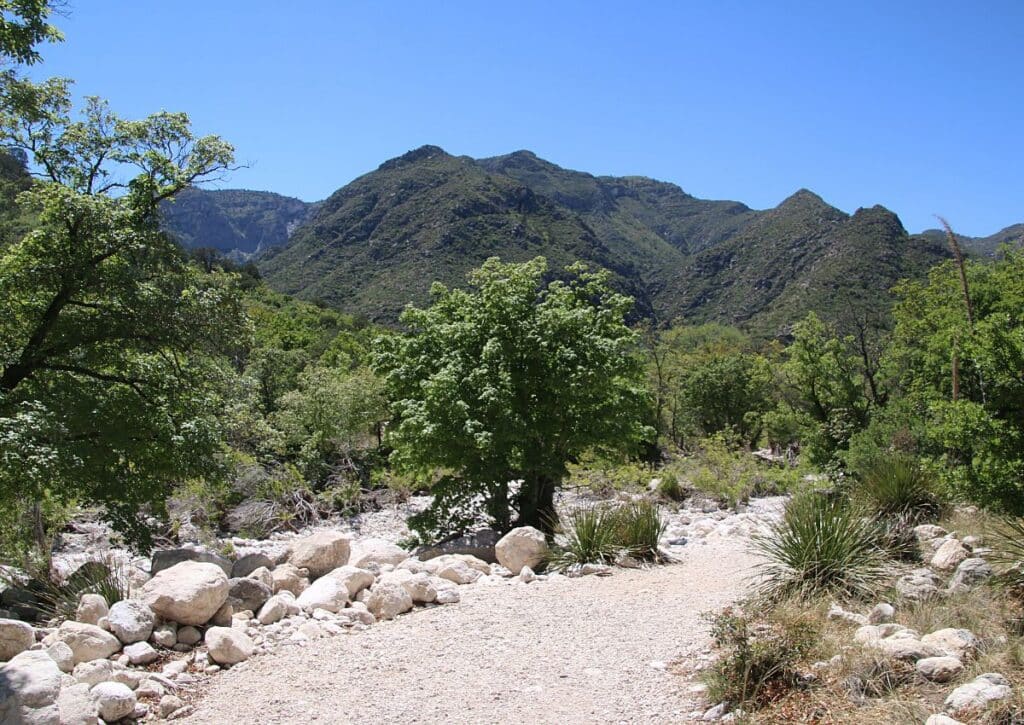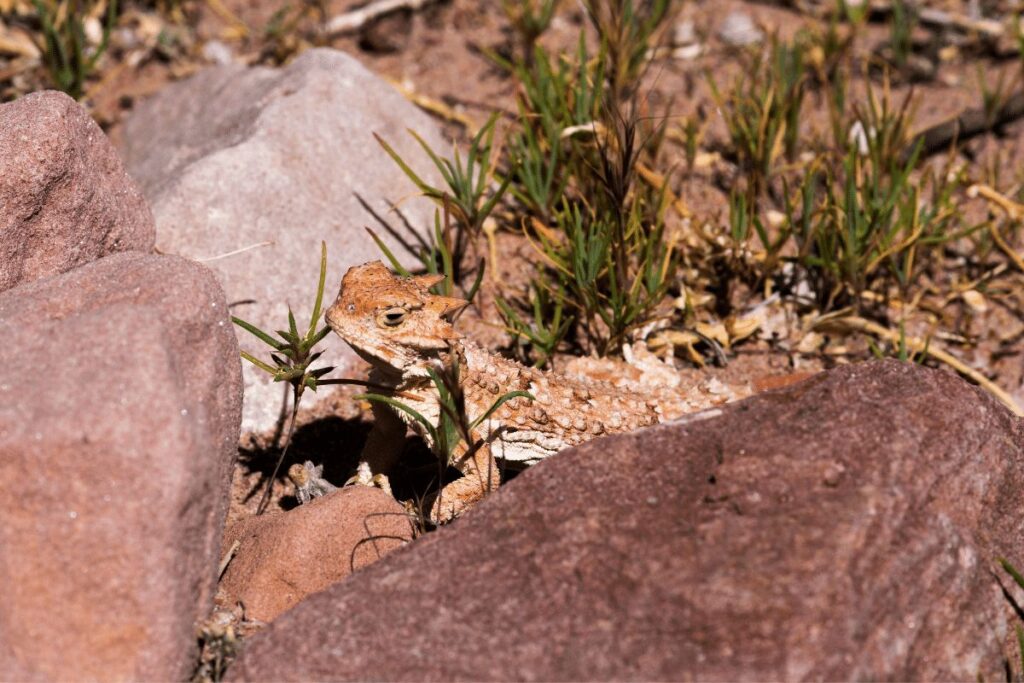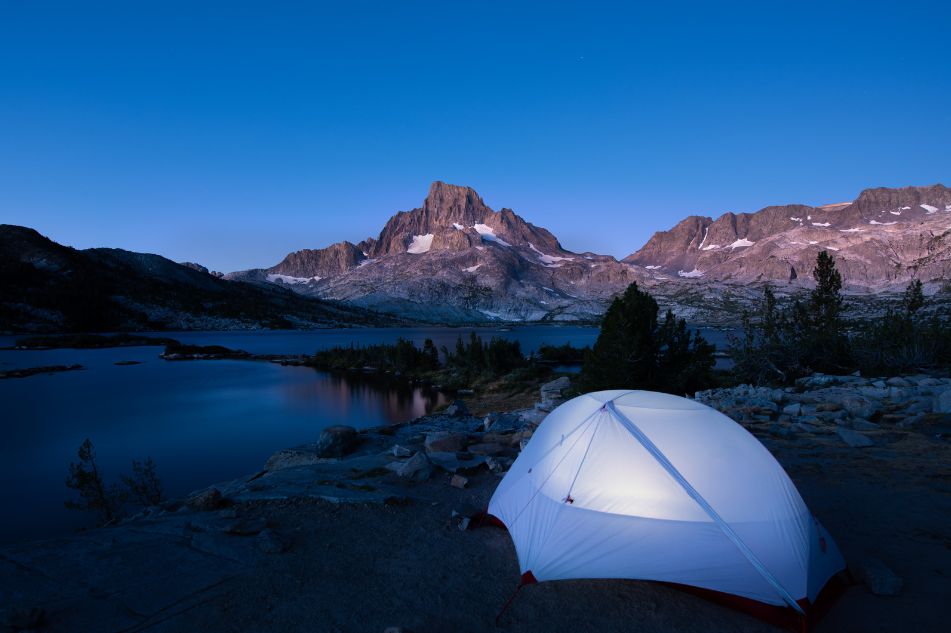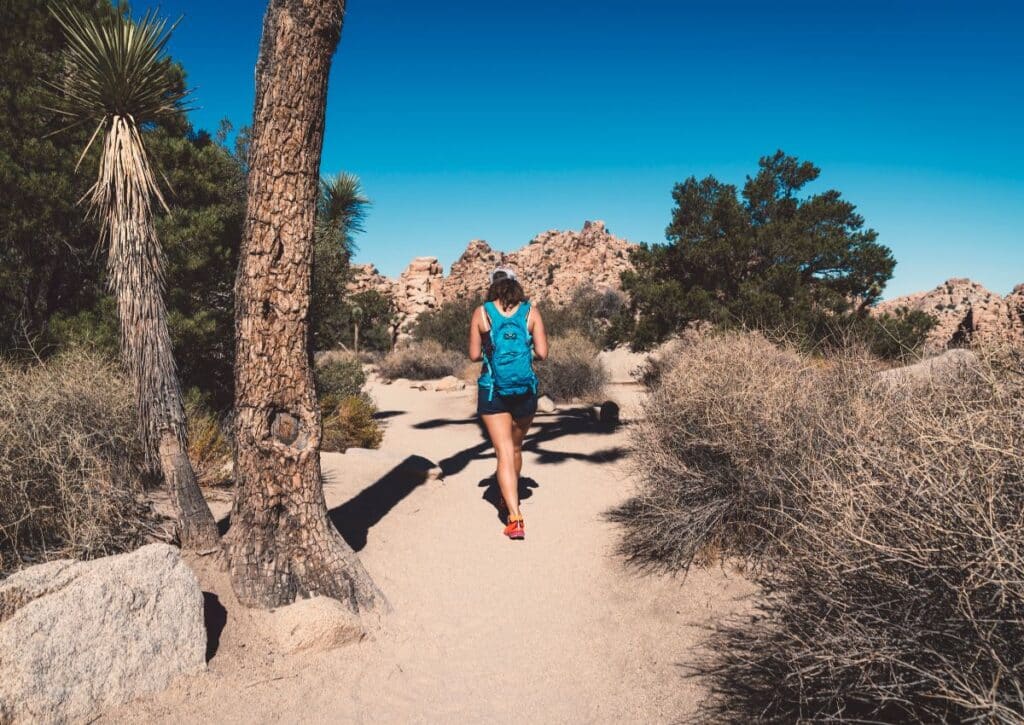Situated in the rugged landscapes of West Texas, the Guadalupe Mountains National Park is a treasure trove of outdoor adventures waiting to be discovered. If you’re gearing up for a visit, you’re in for a treat!
From the soaring peaks like the renowned Guadalupe Peak to the serene depths of McKittrick Canyon, the park offers a diverse array of experiences.
Whether you’re an avid hiker, a history buff, or someone simply looking to escape the hustle and bustle, there’s something here for you. Get ready to pitch your tent under starry skies, trail-blaze through unique terrains, or dive deep into the history at spots like the Frijole Ranch Museum.
As you plan your visit, let this guide be your compass, leading you to the best experiences the park has to offer. Let’s embark on this journey together and uncover the many wonders of Guadalupe Mountains National Park!
Essential Information for Visiting Guadalupe Mountains National Park
🌲 Entrance Fees: $10 per person. Payment accepted in cash or credit at Pine Springs Visitors Center or self-pay stations at trailheads.
🏕️ Camping: Reserve developed campsites online. Wilderness backcountry camping requires a permit.
⚠️ Park Alerts: Always check the park website for the latest alerts and weather conditions.
🐕 Additional Tips:
- Dogs are not allowed on trails.
- Stock up on gas, food, and other essentials before your visit; nearest resources are in Carlsbad, NM, or Dell City, TX.
- Timezone awareness: The park is on a timezone boundary.
- Best visiting times: Spring and Fall. Summer is extremely hot; winter can be cold and windy with occasional severe storms.
- Elevation varies: Weather can differ significantly from base to peak.
- Heed ranger advice: Always follow their safety guidance.
Pine Springs Visitor Center
The Pine Springs Visitor Center is often considered the gateway to the Guadalupe Mountains National Park, and for good reason. Starting your adventure here sets the stage for a well-informed and enriching experience within the park’s expansive landscapes.
For many visitors, this center serves as the first touchpoint, and its significance cannot be overstated. Knowledgeable park rangers are on hand to provide guidance tailored to your interests and abilities.
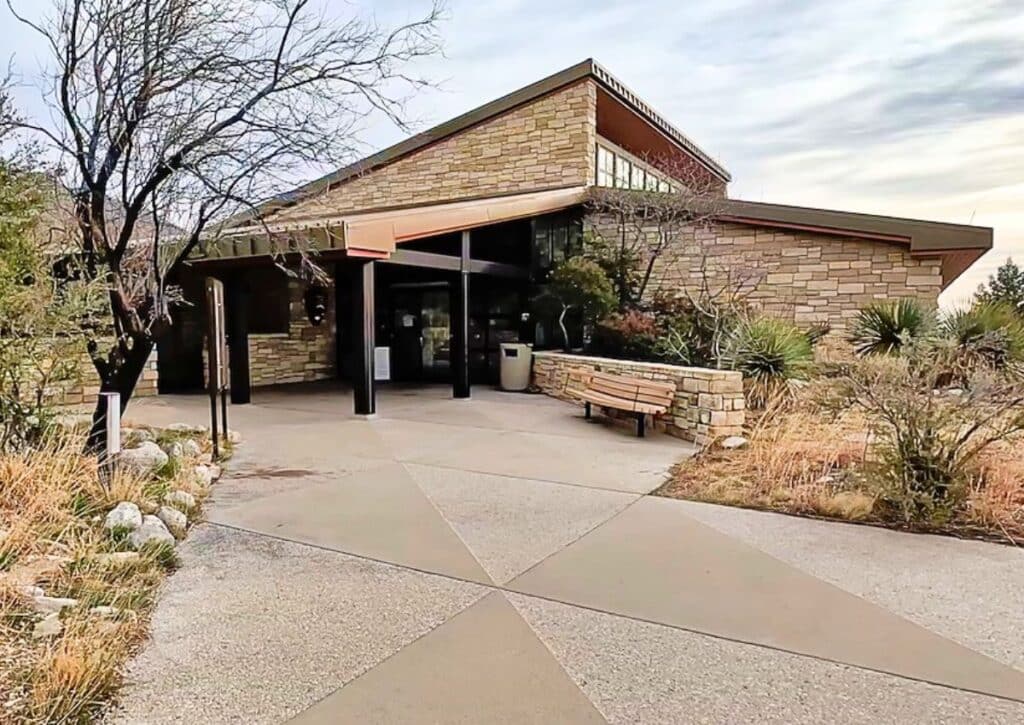
Whether you’re seeking recommendations for the best trails, curious about the park’s history, or looking for the latest safety information, the friendly staff at Pine Springs are equipped to help.
Beyond the invaluable advice, the visitor center houses interpretive exhibits that delve into the park’s unique geology, flora, fauna, and cultural heritage. It’s here that you can get a primer on what makes the Guadalupe Mountains so special, even before you set foot on a trail.
Practical amenities further enhance the visitor experience. From restrooms and water refill stations to a bookstore stocked with maps, guides, and souvenirs, the center ensures that travelers are well-equipped for their journey.
In essence, the Pine Springs Visitor Center isn’t just a stopover; it’s the prologue to your Guadalupe Mountains story, ensuring that your adventure is as rewarding as it is unforgettable.
Hike Guadalupe Peak
Standing tall at an impressive elevation of 8,749 feet, Guadalupe Peak rightfully claims the title of the highest peak in Texas. Setting foot on its summit is akin to being on top of the Lone Star State – literally!
Embarking on the Guadalupe Peak Trail, you’ll navigate a moderately challenging 8.4-mile round trip. As you weave through pinyon pine and Douglas fir forests, the ascent offers a delightful blend of nature’s wonders, from the delicate wildflowers that grace the path to the occasional wildlife sighting.
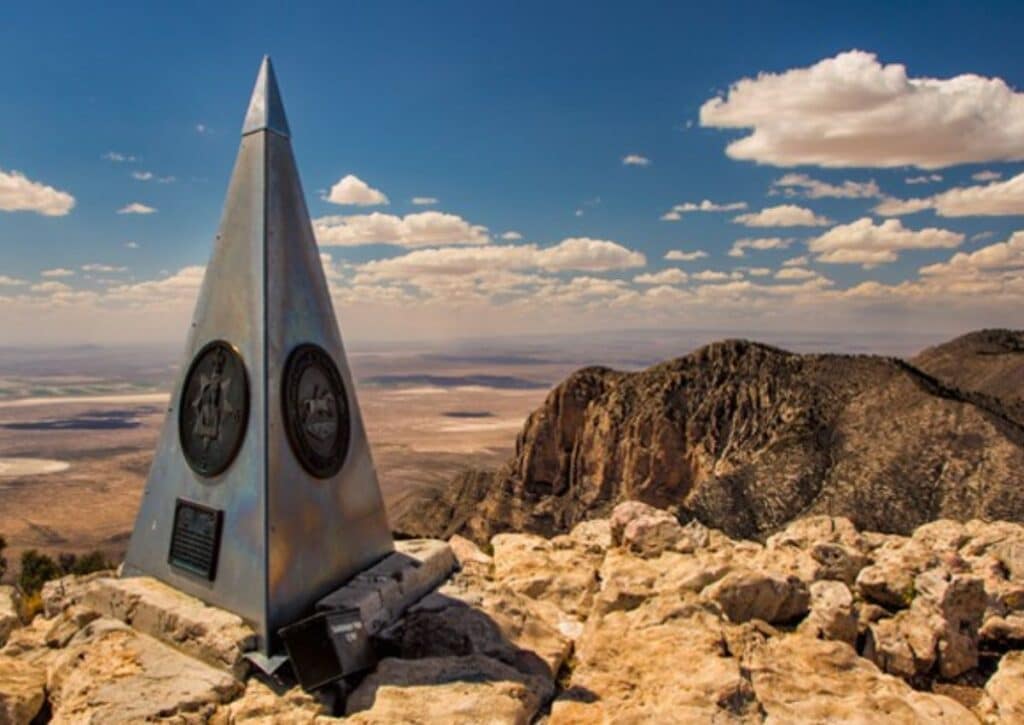
Reaching the summit, however, is where the real reward lies. Panoramic vistas stretch out before you, with an expansive view of the surrounding desert landscape, the vast salt flats, and the intricate patterns of the distant dunes. On clear days, the seemingly endless horizon promises views that can stretch for miles.
And there, at the peak, a stainless-steel pyramid awaits, marking a testament to the many who’ve made the rewarding journey. As you stand there, with the Texas wind gently tousling your hair, you’ll realize that the climb, with its challenges and beauty, was undeniably worth every step.
Pratt Cabin
Built in the early 1930s by Wallace Pratt, a geologist and philanthropist, this stone cabin served as a cherished retreat for its owner. Wallace, enamored by the region’s natural beauty, acquired lands that eventually became a significant portion of the national park.
As such, Pratt Cabin isn’t just a rustic dwelling; it’s a symbol of early conservation efforts and the foresight to preserve the stunning landscapes of the Guadalupe Mountains.
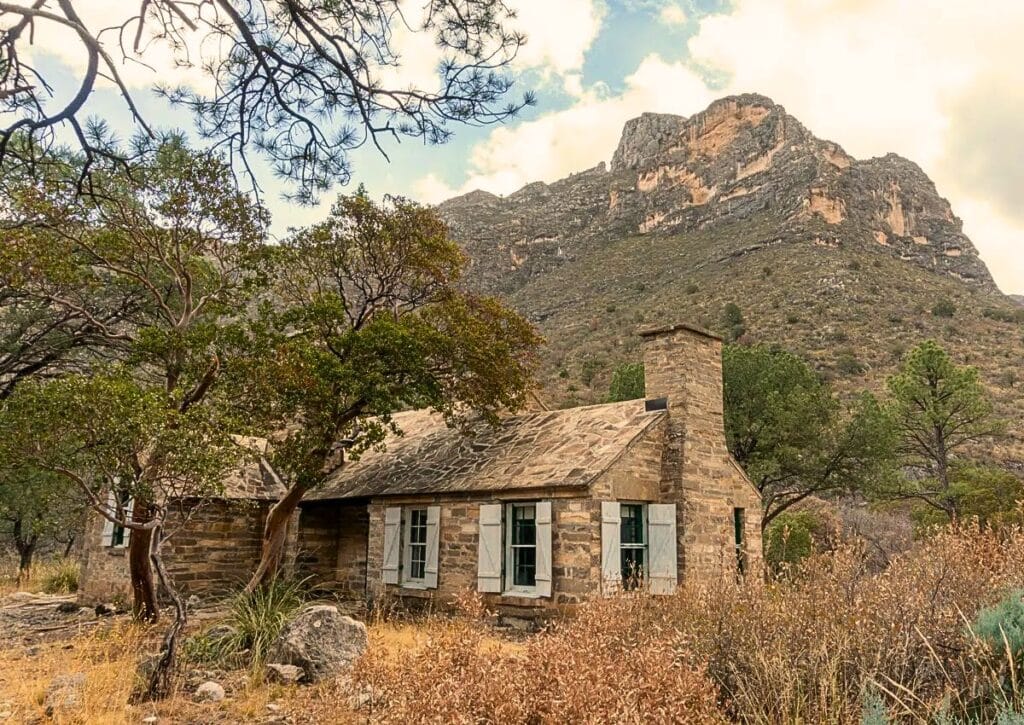
As you approach the cabin, the tranquility of McKittrick Canyon envelops you, offering a stark contrast to the arid desert beyond. Here, the lush greenery and vibrant fall colors (when in season) provide a picturesque backdrop. Near the cabin, visitors can enjoy leisurely picnics on the provided benches or take a moment to reflect by the adjacent creek.
For those keen on exploring further, numerous trails branch out, offering various hikes ranging from easy strolls to more challenging treks. No matter how you choose to spend your time around Pratt Cabin, it promises a serene blend of history and natural wonder.
Hike the Devil’s Hall Trail
If there’s one trail in the Guadalupe Mountains National Park that truly offers a memorable blend of natural formations and exhilarating trekking, it’s the Devil’s Hall Trail. This moderately challenging hike stretches out for about 4.2 miles round trip and is a delightful choice for those looking to immerse themselves in the rugged beauty of the park without the commitment of a day-long hike.
As you navigate through the rocky wash, you’ll be flanked by towering, jagged limestone cliffs, their textures and formations telling tales of ancient geological events.
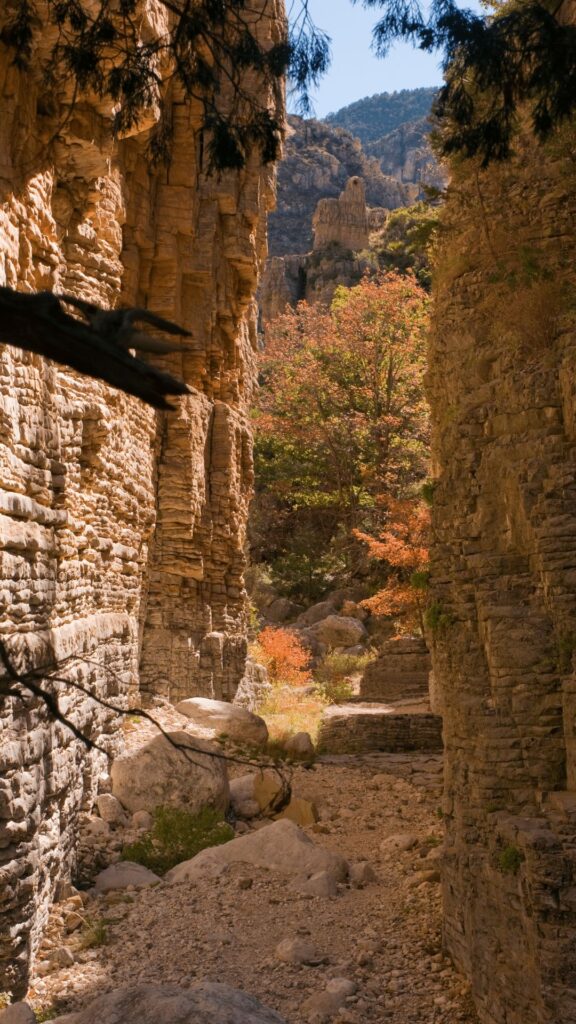
The path takes you through a staircase of natural rock, each step an exciting move closer to the trail’s namesake — the Devil’s Hall. This narrow passage, hemmed in by steep, vertical walls, creates an almost cathedral-like ambience, both awe-inspiring and serene.
While the path can be rocky and requires a bit of careful footing, the sense of discovery and wonder at every turn makes it an enticing adventure. And as you journey back, with the images of the imposing cliffs and the ethereal Devil’s Hall fresh in your mind, you’ll no doubt feel a deep connection to the untamed beauty of the Guadalupe Mountains.
Frijole Ranch Museum
In a land dominated by rugged peaks and vast landscapes, the Frijole Ranch Museum stands as a beacon of human history amidst the wild beauty of the Guadalupe Mountains National Park. Dating back to the late 19th century, the Frijole Ranch has witnessed the evolution of the region, from Native American trails to pioneer settlements.
The ranch was originally established as a homestead and over the years, it served various purposes – from a ranching hub to an orchard. Today, as you step into the museum, you’re instantly transported to a bygone era.

The displays vividly recount tales of the early settlers, their struggles, triumphs, and daily lives. Antique farming tools, photographs, and personal artifacts breathe life into these stories, making history palpable.
But the museum isn’t just confined to its walls. The surrounding ranch grounds offer a glimpse into the past with original structures like the springhouse and outbuildings, all set against the picturesque backdrop of the Guadalupe Mountains. While the Frijole Ranch Museum offers a deep dive into the cultural history of the region, it also serves as a gentle reminder of the harmonious coexistence of man and nature over the centuries. A visit here is not just an educational journey but also a reflection on resilience and legacy.
Camping in Guadalupe Mountains National Park
Camping in the Guadalupe Mountains National Park is an experience that allows visitors to truly connect with the rugged beauty of West Texas. With diverse campgrounds catering to various needs, campers can immerse themselves in the serenity of the mountains, the vastness of the desert, and the brilliance of the starlit skies.
As the sun sets and the golden hues of the day give way to a blanket of stars, the campgrounds of this national treasure come alive with the gentle hum of nature.
When you camp in Guadalupe Mountains, you’re not just setting up a tent or parking an RV; you’re stepping into a rich tapestry of natural wonder and historical significance.
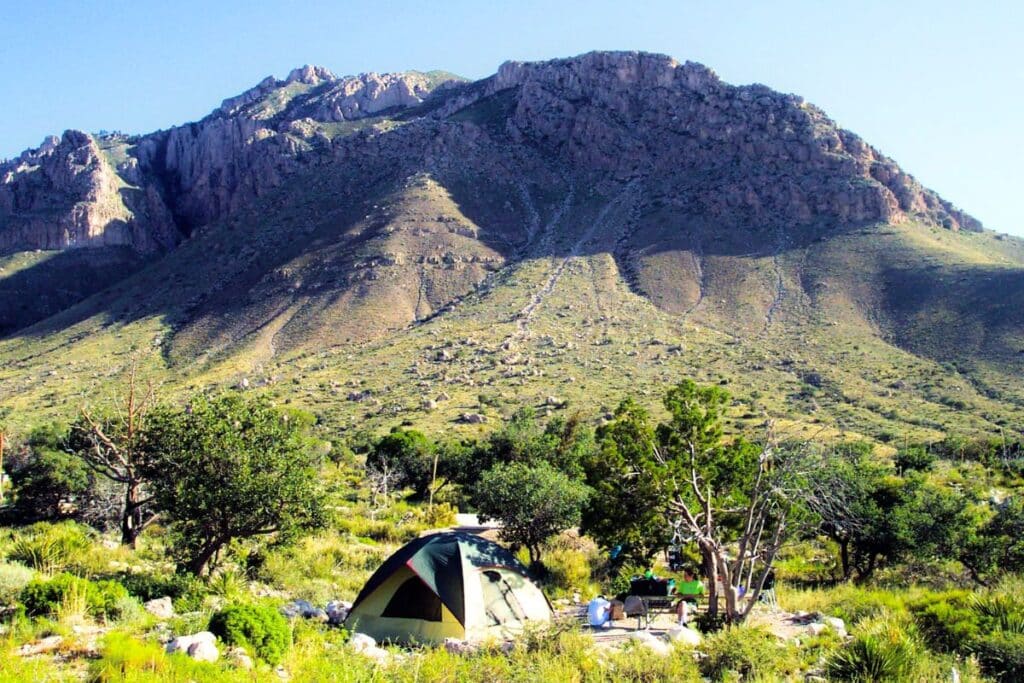
Each campground in the park offers a unique perspective on the breathtaking landscapes that define this region. From the more accessible spots, like Pine Springs, to the primitive beauty of McKittrick Canyon, there’s a place for every kind of camper.
Surrounded by ancient limestone cliffs, vast stretches of Chihuahuan Desert, and trails that lead to mesmerizing vistas, these campgrounds are havens for hikers. The park’s topography changes from campground to campground, offering a diverse range of experiences. Some sites are perfect for those looking to be close to trailheads, while others offer solitude and a deeper connection with the wild.
And it’s not just about the views. The sounds of Guadalupe Mountains – the whispering pines, the chirping of crickets, and the distant call of nocturnal animals – create a soothing backdrop to your camping experience. Campfires (where permitted) crackle in the cool evening air, and tales of the day’s adventures are shared among fellow travelers.
Backcountry Exploration
Beyond the frequented paths of Guadalupe Mountains National Park lies a realm less explored: the backcountry. Diving into this area not only offers a heightened sense of adventure but also a deeper connection to the natural world. Here’s why the backcountry is worth the trek and how to approach it:
1. Unparalleled Solitude: Unlike the main trails, the backcountry offers a tranquil experience, where you might find long stretches of time without encountering another soul. It’s an opportunity to be one with nature, to listen to its rhythms without interruption.
2. Authentic Wilderness: Venturing into the backcountry allows you to witness raw, untouched landscapes. From the rugged trails of the Guadalupe Peak to the serene depths of McKittrick Canyon, every trail offers a unique perspective.
3. Wildlife Encounters: The deeper you go, the higher the chances of spotting rare wildlife in their natural habitat. Always remember to view from a safe distance and never approach or feed them.
Tips for the Journey:
- Understand the Terrain: Different areas come with their challenges. Research the specific region you aim to explore.
- Essential Gear: Along with the standard hiking gear, ensure you have a map, compass, or reliable GPS. Water is scarce, so pack adequately.
- Stay Informed: Before setting out, check the weather conditions and any park advisories.
In essence, backcountry exploration in Guadalupe Mountains National Park is for those seeking a deeper, more intimate nature experience. It’s more than hiking; it’s an adventure into the very heart of the wild. With proper preparation and respect for the environment, it can be one of the most rewarding experiences the park has to offer.
Bush Mountain
Tucked away in the vast expanse of Guadalupe Mountains National Park, Bush Mountain stands as a testament to the park’s diverse topography and natural beauty. Rising to an elevation of 8,631 feet, it is the second-highest peak in Texas, offering hikers a chance to push their limits and witness panoramic views that are truly unparalleled.
Hiking Experiences and Difficulty Level: Bush Mountain Trail is the path most adventurers take to reach the summit. Starting from Pine Springs Trailhead, the round trip covers approximately 13 miles, making it a challenging day hike or a moderate overnight trek. The hike takes you through varied terrains – from dense forests to open ridgelines, with an elevation gain of about 2,000 feet.
It’s not just the distance but also the rugged, sometimes steep, terrain that categorizes this trail as strenuous. The path is well-marked, but sections of loose rock and steep inclines demand caution and sure-footedness. Yet, for those who conquer it, the rewards are immense – sweeping vistas of the surrounding desert, adjacent peaks, and deep canyons.
Flora and Fauna of the Region: Bush Mountain is rich in biodiversity. As you ascend, you’ll notice the change in vegetation – from desert plants at the base to pine forests higher up. The prominent flora includes Ponderosa pine, Douglas fir, and the occasional Agave, especially in the lower elevations.
The region’s fauna is equally diverse. Observant hikers might spot mule deer darting between the trees or hear the distinct call of the mountain chickadee. Golden eagles and red-tailed hawks can often be seen soaring above, while nocturnal animals like ringtail cats and mountain lions are residents, though they’re more elusive.
Hunter Peak
Amid the vast landscapes and towering peaks of Guadalupe Mountains National Park, Hunter Peak often gets overshadowed by its more famous counterparts like Guadalupe Peak. However, those who venture to its summit are rewarded with some of the park’s most breathtaking vistas and an experience that feels both intimate and grand.
Why It’s a Must-Visit: Hunter Peak, rising to an elevation of 8,368 feet, offers a unique vantage point. Its position in the heart of the park provides a 360-degree panorama, where you can take in views of the surrounding desert floor, intricate canyon systems, and neighboring peaks. This vista is especially mesmerizing during sunrise and sunset when the play of light and shadows transforms the landscape into a painterly spectacle.
Another allure of Hunter Peak is its relative solitude. While trails leading to more popular peaks might be bustling with hikers, the path to Hunter Peak often remains less trodden, offering a more serene and undisturbed hiking experience.
Overview of the Trek and Viewpoints: The most popular route to Hunter Peak is the Tejas Trail, a well-maintained path that begins at the Pine Springs Trailhead. Approximately 8.4 miles round trip, this trail takes hikers through diverse ecosystems, from lowland scrub to high-elevation coniferous forests.
The trail, considered moderate to strenuous, involves an ascent through switchbacks and offers glimpses of the park’s unique flora and fauna. As you climb, be sure to stop at notable viewpoints, including the Bowl, a lush, forested depression surrounded by higher ridges, and Bear Canyon Overlook, which provides a bird’s eye view of the sprawling canyon below.
Reaching the summit, you’re treated to the pièce de résistance: a panoramic view that encapsulates the grandeur of Guadalupe Mountains National Park. From here, landmarks like El Capitan, Guadalupe Peak, and the vast Chihuahuan Desert stretch out in all directions.
El Capitan
Standing proudly at the southern edge of Guadalupe Mountains National Park, El Capitan is not just another mountain peak. It’s an emblematic landmark, a beacon that has drawn travelers, photographers, and adventurers for generations. With its sheer cliffs and rugged facade, El Capitan is often the first formation visitors notice, even before they enter the park.
Significance of El Capitan: El Capitan’s iconic status is deeply rooted in its geology and history. As an ancient limestone reef from the Permian Age, it offers a window into the earth’s past, a testament to the forces of nature that shaped this region over millions of years. Rising to an elevation of 8,085 feet, it might not be the highest peak in the park, but it’s arguably the most recognizable.
Historically, El Capitan served as a landmark for travelers and Native Americans navigating the vast Chihuahuan Desert. Its distinctive profile, visible from miles away, made it a reliable point of reference in an otherwise challenging landscape.
Activities and Features Around the Peak: While El Capitan’s sheer cliffs deter most from attempting a summit, the areas around the peak are ripe for exploration:
- Guadalupe Peak Trail: Starting at Pine Springs Trailhead, this trail takes hikers up to Guadalupe Peak, the highest point in Texas. Along the way, there are several viewpoints offering breathtaking vistas of El Capitan and the surrounding desert.
- Scenic Drive: Highway 180 offers several pullouts where travelers can stop, take photos, and marvel at the grandeur of El Capitan. Especially during sunrise or sunset, the play of light on its rugged face is a sight to behold.
- Wildlife Watching: The areas around El Capitan are home to a diverse range of wildlife, from mule deer and golden eagles to various reptiles. Carry binoculars and tread quietly for a chance to spot these creatures in their natural habitat.
- Camping: Nearby campgrounds like Pine Springs and Dog Canyon provide the perfect base for those wishing to spend more time exploring the wonders around El Capitan.
In conclusion, El Capitan is more than just a mountain. It’s a symbol of the enduring spirit of the Guadalupe Mountains, a testament to the rich tapestry of geological and cultural history that defines this region. Whether you’re gazing at it from a distance or exploring its base, El Capitan promises a sense of wonder that’s hard to match.
McKittrick Canyon
Nestled within the rugged landscapes of the Guadalupe Mountains, McKittrick Canyon is a treasure trove of natural wonders. Known for its striking contrasts – from verdant woodlands to arid desert – the canyon offers visitors an unparalleled glimpse into the region’s diverse ecosystems.
Unique Flora and Fauna of the Canyon: McKittrick Canyon is often described as a “desert oasis” due to its surprisingly lush vegetation amidst the surrounding desert. The canyon’s unique microclimate, combined with a reliable water source, supports a range of flora not commonly found in the surrounding areas.
- Flora: The canyon floor is carpeted with bigtooth maples, ash, and oak trees. As you move higher, the environment transitions to a mix of ponderosa pine, juniper, and Douglas fir. Among the more arid sections, you’ll find agaves, yuccas, and cacti, stark reminders of the Chihuahuan Desert’s presence.
- Fauna: McKittrick Canyon is a sanctuary for wildlife. Mule deer, wild turkeys, and even the elusive mountain lion call this place home. Bird enthusiasts can spot species like the acorn woodpecker, rufous-crowned sparrow, and Scott’s oriole. The water sources within the canyon also attract a variety of amphibians and reptiles.
Seasonal Attractions: While McKittrick Canyon is beautiful year-round, it truly shines during the fall.
- Fall Colors: Come late October and early November, the canyon is ablaze with vibrant hues of red, orange, and gold. The bigtooth maples, in particular, put on a spectacular show, making this one of the few places in Texas where visitors can witness a traditional autumnal display. This natural event draws thousands of visitors, making it one of the park’s most popular seasonal attractions.
- Spring Bloom: While fall is the headline act, spring is no less magical. Wildflowers carpet the canyon floor, and the fresh green foliage contrasts beautifully with the reddish hues of the canyon walls.
In essence, McKittrick Canyon is a testament to nature’s ability to surprise and delight. Its rich biodiversity and seasonal spectacles offer visitors a chance to experience the Guadalupe Mountains in a way few other places can. Whether you’re trekking through its depths in the midst of fall or admiring its spring blooms, McKittrick Canyon promises a mesmerizing journey through nature’s wonders.
Salt Basin Dunes
In the vast and varied landscape of the Guadalupe Mountains National Park, the Salt Basin Dunes stand out as a testament to nature’s capacity for stark beauty. These sprawling dunes, shimmering under the Texan sun, are a dramatic contrast to the mountainous terrains and lush canyons that define much of the park.
Importance of This Scenic Spot: The Salt Basin Dunes are more than just a picturesque landscape; they are a geographical marvel. Formed by the accumulation of salts and gypsum, these dunes span across thousands of acres, showcasing unique patterns and textures crafted by the elements over millennia.
The dunes’ gypsum content makes them especially noteworthy, as gypsum dunes of this scale are rare, with White Sands in New Mexico being another famous example.
Beyond their geological significance, the dunes also play a crucial role in the park’s ecosystem. They act as a habitat for various desert-adapted species and offer insights into the adaptive strategies of plants and animals in such a challenging environment.
Activities and Best Time to Visit:
- Dune Exploration: Wander the dunes on foot and marvel at the intricate patterns created by wind and water. The experience is akin to being on another planet, with the vastness of the dunes stretching out as far as the eye can see.
- Photography: The Salt Basin Dunes are a photographer’s dream. Whether capturing the dunes’ undulating forms, the play of shadows during sunrise or sunset, or the stark contrast between the white gypsum and the blue sky, there’s no shortage of inspiring visuals.
- Night Sky Viewing: Far from city lights, the dunes offer an exceptional opportunity for stargazing. On clear nights, the Milky Way can be seen arching across the sky, and during meteor showers, the spectacle is truly breathtaking.
Best Time to Visit: While the dunes are accessible year-round, the best times to visit are during the spring and fall when temperatures are milder. Summers can be extremely hot, making exploration during midday challenging. Regardless of when you visit, it’s essential to stay hydrated and be prepared for the desert conditions.
The Salt Basin Dunes are not just a scenic spot but a destination that encapsulates the raw beauty and mysteries of the desert. Their sheer scale, combined with the ever-changing play of light and shadow, ensures that every visit is a unique and unforgettable experience.
Wildlife Viewing
The rugged landscapes of Guadalupe Mountains National Park harbor a rich tapestry of life. From the smallest insects to large mammals, the park is a haven for diverse species, each adapted to the unique challenges of their environment. This diversity makes the park a prime destination for wildlife enthusiasts keen on observing nature in its rawest form.
Overview of Native Species:
- Mammals: The park’s expansive landscapes are home to mule deer, elk, and even the elusive mountain lion. Smaller mammals, such as the gray fox, black-tailed jackrabbit, and rock squirrel, are also commonly sighted.
- Birds: With over 200 bird species recorded in the park, birdwatchers are in for a treat. Highlights include the peregrine falcon, acorn woodpecker, and the golden eagle. The park’s varied habitats, from woodlands to desert, attract a diverse range of avian species.
- Reptiles and Amphibians: The park’s desert environment is perfect for reptiles like the collared lizard, horned lizards, and various snake species, including the black-tailed rattlesnake. Pools and springs also provide habitats for amphibians like the red-spotted toad.
- Insects: For those with an eye for smaller creatures, the park boasts a rich insect life, from colorful butterflies to the industrious harvester ant.
Tips for Wildlife Spotting and Viewing:
- Time of Day Matters: Dawn and dusk are the prime times for wildlife activity. Many animals are crepuscular, meaning they’re most active during these hours to avoid the heat of midday.
- Be Patient and Quiet: Wildlife often takes time to appear. Patience, combined with minimal movement and noise, increases your chances of sightings.
- Safety First: Always maintain a safe distance from wild animals. Never feed or approach them, as this can be dangerous for both you and the animal.
- Use Binoculars: A good pair of binoculars can greatly enhance your viewing experience, allowing you to observe animals without getting too close.
- Stay on Marked Trails: Besides ensuring your safety, sticking to trails reduces the impact on habitats and reduces the chances of disturbing wildlife.
- Join Guided Tours: Park rangers often lead wildlife walks and talks, providing expert insights and increasing your chances of sightings.
Bird Watching
Guadalupe Mountains National Park is a haven for avian enthusiasts. The park’s varied ecosystems, from lush woodlands to arid desertscapes, attract a diverse range of bird species, making it a must-visit for both casual birdwatchers and seasoned ornithologists.
Whether you’re keen on catching a glimpse of raptors soaring in the sky or small songbirds flitting about, there’s no shortage of avian wonders in this Texas gem.
List of Common Birds That Can Be Spotted:
- Peregrine Falcon: This powerful raptor can often be seen soaring high in search of prey.
- Golden Eagle: With its majestic wingspan, spotting this bird is a treat for any birdwatcher.
- Acorn Woodpecker: Recognizable by its vibrant plumage and peculiar call, this bird is often found near oak woodlands.
- Mountain Bluebird: A small bird with striking blue feathers, it’s a delight to spot against the park’s rugged backdrop.
- Scott’s Oriole: This black and yellow songbird has a melodious song and is often seen in desert scrub areas.
- Canyon Towhee: With its subtle brown tones, this bird might be harder to spot but is common in the park.
- Say’s Phoebe: Often perched on low branches or fences, this bird has a distinctive call and ash-gray plumage.
Best Spots and Seasons for Birdwatching:
- McKittrick Canyon: Renowned for its fall foliage, this area is also a hotspot for birdwatching, especially during the migratory seasons.
- Pine Springs Area: This region provides a mix of desert and woodland habitats, making it a diverse birding location.
- Dog Canyon: Located on the park’s north side, it offers a peaceful setting for birdwatching, away from the usual crowds.
- Frijole Ranch: The presence of water sources here attracts various bird species, especially during dryer months.
Seasons:
- Spring and Fall Migrations: These are peak times to spot a diverse range of bird species. The park becomes a crucial stopover for many birds during their long migratory journeys.
- Winter: While some birds migrate to warmer regions, many raptors and other species can still be observed during the colder months.
- Summer: Early mornings and late evenings are the best times to venture out, as many birds become less active during the hot midday sun.
Conclusion
From the towering peaks of El Capitan and Guadalupe to the serene depths of McKittrick Canyon, Guadalupe Mountains National Park unfolds as a testament to nature’s splendor. Whether you’re a passionate hiker aiming for the summit, a birdwatcher with an eagle eye, or someone seeking solace amidst nature, this park offers experiences as vast and varied as its landscapes.
Each trail, viewpoint, and campground introduces visitors to a new facet of the park’s beauty. Its diverse ecosystems beckon with tales of ancient geological wonders, vibrant wildlife, and the timeless dance of flora and fauna. As the sun casts its golden hue over the Salt Basin Dunes and the songs of myriad birds fill the air, it’s hard not to be swept away by the sheer magic of it all.
As you prepare to leave, carry with you not just memories of the breathtaking views or the thrill of backcountry exploration, but also a deeper appreciation for the natural world. May the spirit of adventure and the beauty of Guadalupe Mountains National Park stay with you, urging you to return, explore, and cherish nature’s wonders once more.

